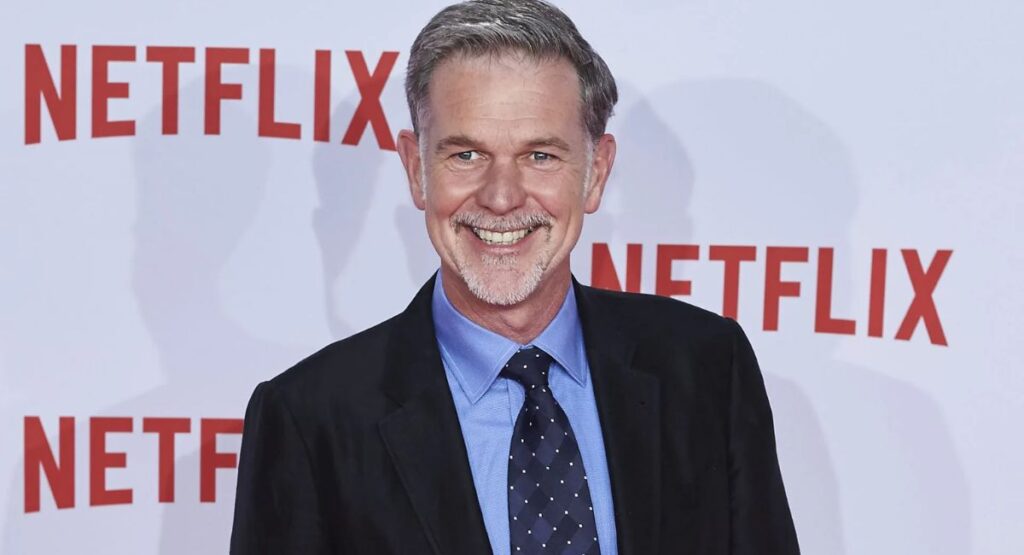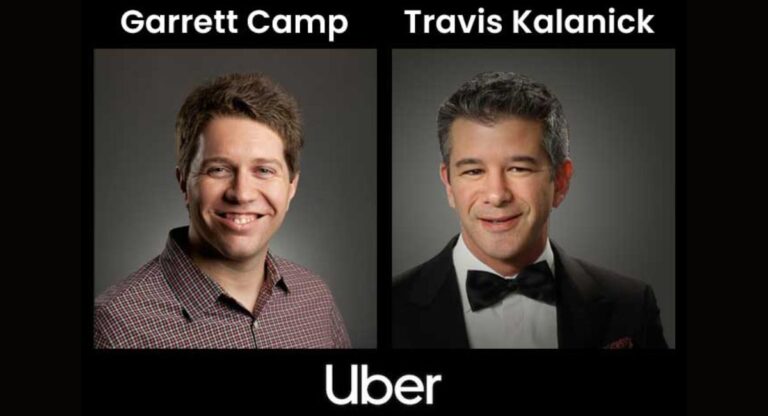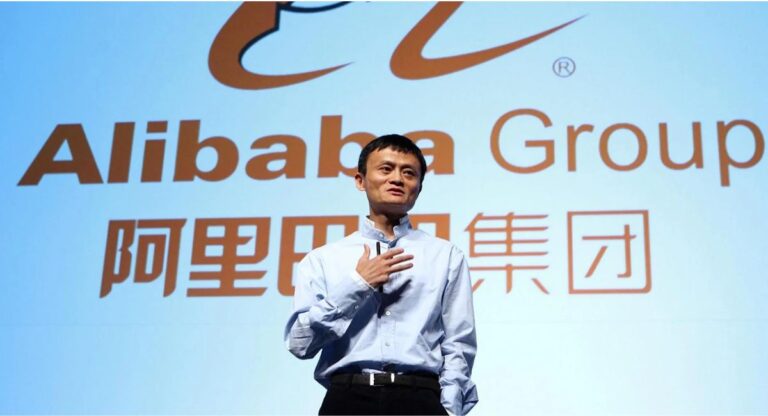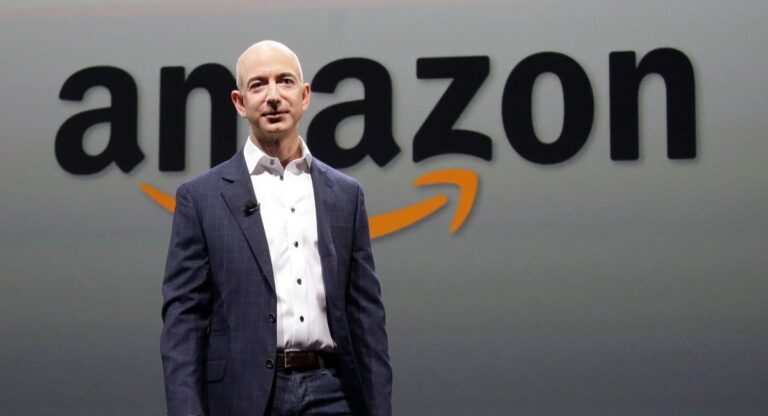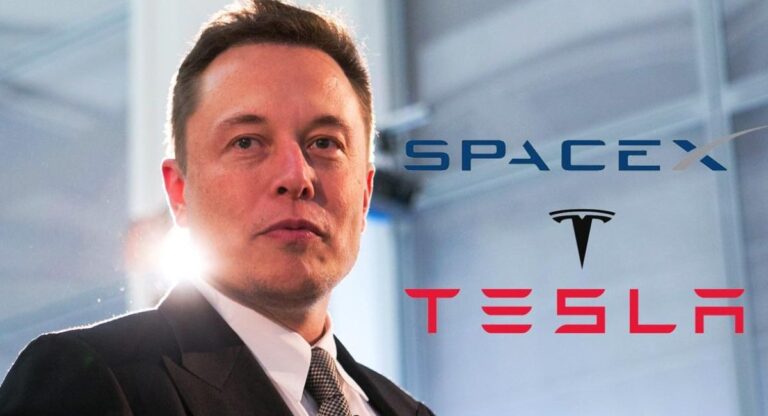The story of Reed Hastings Netflix represents a rare blend of innovation, foresight, and calculated disruption. From humble beginnings as a DVD rental service to becoming the world’s leading streaming platform, Netflix has fundamentally reshaped entertainment consumption.
What makes this journey compelling isn’t just technology, it’s the leadership philosophy of its co-founder, Reed Hastings. His vision of merging data, storytelling, and user-centric design revolutionized how the world experiences entertainment.
This blog explores the remarkable evolution of Reed Hastings Netflix, diving into the company’s origins, growth, culture, and lasting impact on the digital age.
READ MORE: How Aman Gupta Built boAt into India’s Audio Tech Powerhouse Without Venture Backing
Early Life and Visionary Beginnings
In this section of the Netflix founder biography, we trace the roots of Hastings’ entrepreneurial spirit and analytical mindset.
Reed Hastings
- Full Name: Wilmot Reed Hastings Jr.
- Born: October 8, 1960
- Birthplace: Boston, Massachusetts, USA
- Education:
- Bachelor’s in Mathematics from Bowdoin College (1983)
- Master’s in Computer Science from Stanford University (1988)
- Early Career: Founded Pure Software in 1991, sold to Rational Software for $750 million in 1997.
Hastings’ experience at Pure Software taught him the importance of adaptable management and transparent corporate culture principles that later defined Reed Hastings Netflix.
The spark for Netflix came from a simple frustration: after being charged a $40 late fee at Blockbuster, Hastings imagined a rental service that was convenient, affordable, and penalty-free. This single moment became the foundation of one of the most disruptive business models in media history.
The Birth of Netflix – A Disruptive Idea
The founding of Netflix in 1997 marked a new chapter in Netflix history. Partnering with entrepreneur Marc Randolph, Hastings launched a mail-based DVD rental service with a website interface, an unheard-of concept at the time.
The Reed Hastings Netflix model stood out for its simplicity: rent online, receive DVDs by mail, and return them with prepaid envelopes. Two years later, in 1999, Netflix introduced its signature subscription plan offering unlimited rentals for a flat monthly fee with no due dates, no late fees.
Early Netflix Milestones
| Year | Milestone | Description |
| 1997 | Netflix founded | DVD rental by mail begins |
| 1999 | Subscription model | Unlimited rentals, no late fees |
| 2002 | IPO launch | Netflix goes public at $15/share |
| 2007 | Streaming launch | Shift to on-demand digital content |
This early phase of Netflix history demonstrates how Hastings used customer empathy and data to predict changing behaviors long before the market did. By focusing on convenience and technology, he positioned Netflix for the coming digital revolution.
READ MORE : Beyond Attention Spans: Nikhil Kamath on Why Social Media Is Losing Curiosity and Trust
Reed Hastings’ Leadership and Vision
The leadership style behind Reed Hastings Netflix success combines analytical rigor with human empathy. Hastings is known for promoting a culture of “Freedom and Responsibility,” where creativity thrives under accountability.
Instead of relying on strict hierarchies, he encouraged employees to act as decision-makers trusting them to do what’s best for the company. This radical culture became public with the Netflix Culture Deck (2009), which outlined the principles of autonomy, transparency, and innovation.
The Netflix Culture Deck Highlights
- Talent density over headcount
- Radical honesty and feedback culture
- No formal vacation policy employees manage their time
- “Adequate performance gets a generous severance”
This unique management philosophy, now studied in business schools, forms a central theme in the Netflix founder biography. It shows that the secret to Netflix’s adaptability lies not only in technology but in its people-first approach.
The Streaming Revolution – Turning Point in Netflix History
The 2007 launch of streaming transformed Netflix history from a mail-order business into a technology-driven entertainment powerhouse. Reed Hastings Netflix recognized that broadband adoption and changing viewer habits would make streaming inevitable.
Rather than defend its DVD business, Netflix led the shift. It invested in cloud infrastructure, licensing, and recommendation algorithms to deliver personalized content experiences.
Why Streaming Changed Everything
- On-demand access eliminated physical barriers.
- Algorithms used viewer data to personalize recommendations.
- The “binge-watching” phenomenon redefined TV viewing.
- Global audiences connected through shared digital content.
Netflix Growth by Decade
| Decade | Subscribers (Approx.) | Key Innovation |
| 2000s | 10 million | Streaming technology |
| 2010s | 150 million | Original programming |
| 2020s | 250+ million | Global expansion & localization |
The streaming pivot was not just a technological shift it was a redefinition of how media companies interact with audiences. This is where Reed Hastings Netflix became synonymous with digital transformation.
READ MORE: How Elon Musk Built Tesla, SpaceX, and Neuralink: A Deep Dive into His Empire
Reed Hastings’ Focus on Innovation
Innovation sits at the heart of Reed Hastings Netflix. Every strategic move is backed by data, experimentation, and long-term thinking.
Key innovations include:
- AI-Driven Recommendations: Netflix algorithms account for 80% of watched content.
- Content Personalization: Thumbnails and interfaces adapt per viewer.
- Original Programming: Launch of House of Cards in 2013 marked the start of Netflix Originals.
- Data-Backed Creative Decisions: Investments guided by viewing analytics and predictive modeling.
Lessons from the Netflix Founder Biography
- Combine creativity with scientific precision.
- Take risks before competitors react.
- Let culture and technology evolve together.
- Focus on delivering consistent user delight.
These lessons illustrate how Reed Hastings Netflix became the standard for modern digital business models.
Challenges and Setbacks in Netflix History
- 2011 Qwikster Controversy: Netflix announced a plan to split its DVD and streaming services under the name Qwikster, which led to widespread customer backlash and subscription losses. The decision was quickly reversed after negative feedback.
- Market Competition: Competitors such as Amazon Prime Video, Disney+, and HBO Max intensified the streaming wars, forcing Netflix to differentiate itself through technology and content innovation.
- Content Licensing Issues: As studios launched their own streaming platforms, Netflix lost access to popular titles, compelling it to invest more heavily in original productions.
- Financial Pressure: The cost of global expansion and content creation placed short-term strain on profitability, testing the company’s ability to balance growth with sustainability.
- Strategic Adaptation: Despite these challenges, Reed Hastings Netflix prioritized exclusive content, advanced data analytics, and international markets to maintain leadership.
- Long-Term Vision: Short-term losses were accepted as necessary investments for future dominance a recurring lesson from the Netflix founder biography about resilience, innovation, and strategic patience.
READ MORE: Bill Gates Biography 2025: How One Man’s Vision Built Microsoft and Transformed Humanity
Global Expansion and the Entertainment Revolution
Under Reed Hastings Netflix, the company expanded to more than 190 countries, reflecting a strategic blend of cultural adaptability and technological scalability.
Global Strategies
- Localization: Subtitles and dubbing in 30+ languages.
- Regional Content: Investments in Korean, Indian, and Spanish programming.
- Mobile Plans: Affordable streaming options for emerging markets.
- Partnerships: Collaborations with local studios and telecom providers.
This stage of Netflix history redefined what global entertainment means. Titles like Money Heist and Squid Game proved that non-English shows could dominate global charts, validating Hastings’ belief in cultural universality.
The Legacy of Reed Hastings Netflix
When Hastings stepped down as CEO in 2023, he left an enduring legacy of innovation and leadership. The Netflix founder biography reveals a consistent theme: technological evolution guided by human understanding.
Under his leadership, Netflix went from mailing DVDs to delivering billions of hours of digital entertainment weekly. Reed Hastings Netflix exemplifies how constant reinvention can sustain long-term success in volatile industries.
Lessons Entrepreneurs Can Learn from Reed Hastings Netflix
- Innovate Relentlessly: Disrupt your own model before others do.
- Empower People: Culture drives performance more than policy.
- Leverage Data: Decisions grounded in analytics are sustainable.
- Stay Global-Minded: Diversity fuels creativity and relevance.
- Adapt Quickly: Pivoting early defines market leaders.
For emerging entrepreneurs, the Reed Hastings Netflix journey highlights that success demands both courage and curiosity traits essential to surviving in the fast-moving digital economy.
Conclusion:
The story of Reed Hastings Netflix is more than corporate success, it’s a blueprint for digital transformation. From late-fee frustration to global streaming dominance, Hastings demonstrated how insight, innovation, and empathy can build an empire.
The Netflix founder biography underscores the role of visionary leadership in shaping entire industries. As Netflix continues to evolve with artificial intelligence, gaming, and interactive storytelling, Hastings’ philosophy of experimentation remains its guiding compass.
Ultimately, Reed Hastings Netflix is not just about entertainment it’s about redefining how the world connects through stories. know more about The Evolution of Netflix: From Renting DVDs to Establishing Global Streaming Supremacy( source )
Frequently Asked Questions
- Who is Reed Hastings?
Reed Hastings is the co-founder of Netflix and a pioneer of the global streaming revolution. - When was Netflix founded?
Netflix was founded in 1997 by Reed Hastings and Marc Randolph in California. - What inspired the idea for Netflix?
A late fee at Blockbuster inspired Hastings to design a more user-friendly movie rental system. - How did Netflix shift from DVDs to streaming?
Under Reed Hastings Netflix leadership, streaming launched in 2007, transforming its business model. - What makes the Netflix culture unique?
It emphasizes autonomy, innovation, and accountability outlined in the famous Culture Deck. - What are Netflix’s biggest challenges?
According to Netflix history, the main challenges include rising competition, content costs, and changing consumer habits. - How many countries does Netflix serve?
Netflix operates in over 190 countries with localized content offerings. - What role does data play in Netflix’s success?
Data analytics power recommendations, content development, and marketing personalization. - What lessons can entrepreneurs learn from Reed Hastings?
The Netflix founder biography teaches adaptability, vision, and a people-first management style. - What is next for Reed Hastings?
As Executive Chairman, he continues guiding Netflix’s strategic growth and innovation roadmap.

